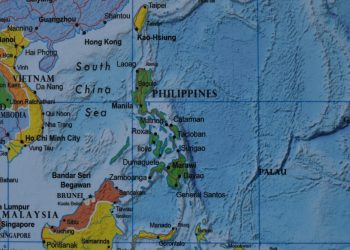Following world’s first attempt to clean up the Great Pacific Garbage Patch from marine plastics that was interrupted due to unscheduled issues in late 2018, The Ocean Cleanup began to work on solutions that could start trialing again in June.
In September 2018, the Dutch foundation deployed System 001 into the Great Pacific Garbage Patch, marking the first-ever attempt to start cleaning it up.
However, during the last campaign, the system did not maintain a sufficient speed, allowing plastic to exit the system, and a stress concentration caused a fatigue fracture in the HDPE floater.
With the understandings from the root cause analysis, the engineering team began to work on solutions that we could start trialing in the Great Pacific Garbage Patch in June.
The upgraded design, ‘System 001/B’, will entail various modifications that will be tested during the next campaign.
In addition to the modifications detailed below, the main improvement of the structural design was to simplify the HDPE pipe and allow minimal fluctuations in the wall thickness.
The next campaign aims to test:
- New screen design – because the rail connection (dovetail connection) was the cause of the fatigue fracture, we have completely eliminated this aspect of the design by bringing the screen slightly forward and connecting it to the pipe using slings. This simplifies the connection to the system and should allow us to minimize stress concentrations.
- Eliminate stabilizer frames – to ease the loads on the pipe, we will not use the stabilizer frames. By simplifying the electronics on this design in particular, we no longer require these frames, as they were primarily there to prevent the system from toppling over from the weight of the electronics.
Additionally, to effectively remove vast amounts of plastic, the system must be able to catch and retain plastic for long periods of time with minimal plastic loss.
To retain the captured plastic, it is not as important if the system moves slower or faster than the plastic, rather the key is consistency: the velocity different must either always be positive or negative. In other words, the system must always go faster than the plastic or always go slower than the plastic. Fluctuations in the speed will prevent the plastic from staying within the system – as we saw during the previous campaign.
As such, The Ocean Cleanup will test two options that will either speed up the system or slow it down:
- Inflatable buoys – one idea was to add a sail to increase the windage of the system, but the loads from a sail would be too great during storms – approximately five tons of force for every meter of sail. The force would cause the system to topple over, resulting in complicated structures to keep it upright. This option was, therefore, not feasible. However, this thinking did lead us to the idea of disconnecting the sail from the floater and let the sails float freely. To test this idea, we will trial giant inflatable buoys on the front of the system which will tow the system forward, propelled by the force of the wind.
- Sea anchor – an alternative option, should the buoys prove ineffective at speeding up the system, is to attach a massive 20-meter-diameter parachute-like sea anchor, which will turn the system around and, in theory, maintain a slower speed than the plastic. Rather than attempting to go faster than the plastic, this option brings the speed close to the speed of the water, making use of the observation that the plastic can travel substantially faster than the water current.
System 001/B is aimed at proving the technology; however, we accept that we might find more unknowns that will lead to further adaptations to the design. In either case, we expect to learn more about the overall system design and the performance of our technology with this system. This system will return to shore once we can/cannot confirm the proposed solutions and we will move forward with the necessary redesigns with these learnings,
…said the Foundation.

































































